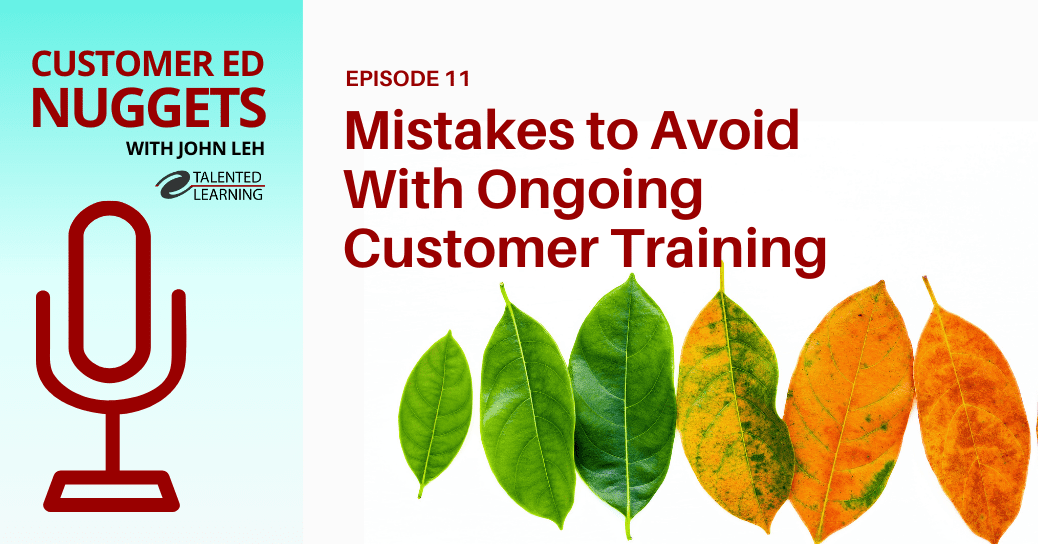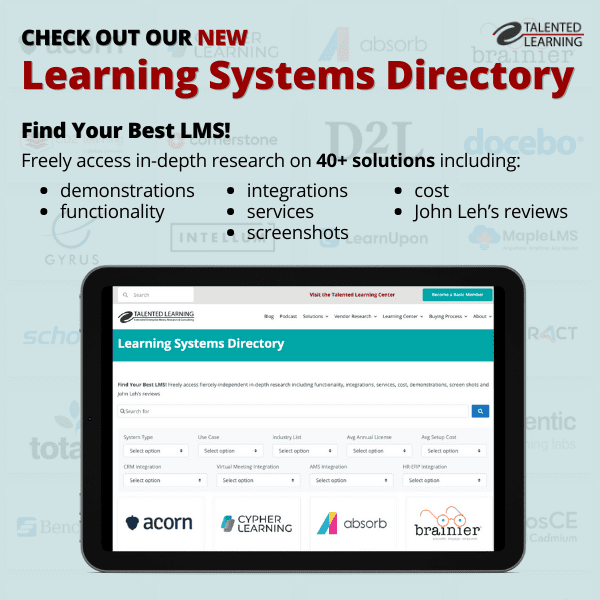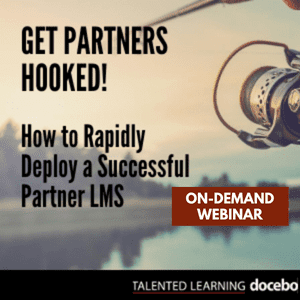
“If you build it, they will come.” We all know this iconic line from the classic film, Field of Dreams. But if you sell educational content, you know this kind of wishful thinking won’t grow your business.
You can design training courses that are highly effective at developing skills and competencies. You can aggregate a comprehensive library of top-notch third-party educational resources. You can also invest in innovative tools to manage online transactions, deliver content and measure its impact.
But no matter how fantastic your learning products may be, there is no guarantee anyone will even know it exists – let alone buy from you.
Marketing: The Instructional Business Blind Spot
Many learning professionals are fantastic at instructional design and content creation, yet they are totally overwhelmed by the concept of marketing. As a professional who straddles both worlds, I get that.
Marketing can seem intimidating, time-consuming, expensive and altogether unrelated to learning. However, after decades as a marketing and sales professional in the learning technology space, I can assure you that these two “different” worlds share more in common than you might think.
Both require you to:
- Define objectives that align with business goals.
- Identify and understand your audience.
- Apply engagement techniques that encourage participation.
- Motivate learners to return again and again.
- Measure results in accurate, actionable ways.
On the other hand, the terminology, tools and technologies don’t always align, so you should expect an ongoing learning curve. Perhaps you know some professionals who are experts at both learning and marketing. I call them instructional marketers (or marketing instructionalists).
Whatever you call them, it’s smart to know professionals with this dual mindset. Why? Because their marketing ideas can add rocket fuel to your training adoption “field of dreams.”
Here’s how: Sometimes at work, your employer may require you to complete a compliance course. In that scenario, you’re “forced” to participate in training. But in nearly every other situation, training is a voluntary act.
As adults, many of us pursue continuing education through professional associations, educational institutions or commercial training companies voluntarily. It’s a conscious choice. We also engage in training as consumers, business customers or partners.
Again, it is a choice. And whether we pay to participate or not, there is a common denominator: We discover those opportunities because an organization reached out to us with a compelling offer. That’s where marketing makes a huge difference.
Of course, knowing that marketing attracts the right learners to your content is like knowing that if you want to lose weight you need to eat less and exercise more. It’s easier said than done. But as my dad (and his dad, and his dad) would say, “Everything is easy, once you know how.”
If you want to attract people who voluntarily choose your learning content, marketing is mandatory. So next, let’s look at how you can put more marketing muscle behind your instructional content business.
Attraction Marketing: Is a “Freemium” In Your Future?
Several decades ago, software companies began offering no-cost access to products for a limited time (or with a limited feature set), hoping to drive more demand for the premium version in the long-run. In recent years, this “freemium” concept has gained momentum among SaaS providers, mobile app developers and content companies.
As market advisors and content publishers at Talented Learning, we rely on a freemium approach to showcase our thought leadership through webinars. Every month we partner with different sponsors to examine key learning technology topics. (For example, one of our popular webinars is “How to Succeed at Extended Enterprise Education: Strategies for Learning Engagement.”)
We don’t charge attendees to attend these sessions. Instead, we offer webinar content at no charge, as a window into the kind of value we (and the sponsor ) provide through paid services. This makes it possible for us to deliver an educational webinar experience that completely avoids sales pitches and pressure.
Many marketing-savvy training organizations rely on similar webinar strategies, but that’s not the only option. You might prefer to offer a specialized MOOC, a free course module or free sample lessons. In our case, we provide free access to a sample lesson from our “Independent Guide to LMS Requirements,” which is otherwise sold at a premium.
These aren’t the only ways to drive conversions. Many low-cost marketing automation tools and marketing-savvy learning platforms now support specialized packaging, pre-scheduled content subscriptions, coupons, discounts, bundles, branded promotions and more.
The potential to test targeted offers is limited only by your imagination.
Spreading the Word
Now you have a taste of how to create compelling content offers, but the best offer in the world is worthless if no one sees it! How do you communicate with potential customers and draw them in? Again, let’s look at what we know best – Talented Learning.
Our company (like many others) is a self-funded startup. In other words, we wear many hats, even though we can’t afford new shoes as we grow. That means we live by a bootstrapper’s mantra – make the most of what is useful and free before we pay for anything. And it extends to inbound marketing, as well.
Of course, we could spend thousands and thousands on third-party email blasts, banner advertising and sponsorships. But this is our primary question: “What tools and resources can we leverage first to spread the word and expand our audience?” Here are some of the no/low-cost techniques that work for us…
16 Ways To Market Educational Content on a Budget
1) Never Let Live Content Go to Waste
Be sure you record every event featuring experts from your company. In this era of quick, easy mobile audio/video streaming and editing, capture commentary in a form that you can re-use elsewhere to educate your market.
2) Choose Event URLs that Outlive the Moment
Some webinar hosts assign a registration URL you can’t control. As soon as the live event ends, the URL goes “dark” and you can’t redirect it to a recording. Instead, opt for solutions that let you “own” the event URL, so you can redirect visitors to on-demand content as soon as it’s available.
3) Post Event Banners on Your Website
Create visually rich display ads that link to your registration/landing page, and post them on your website for at least a month prior to the event.
4) Develop Related Blog Posts
Write one or more relevant blog posts and embed text links and visual “calls to action” within the body copy.
5) Insert a Pop-Up Web Form
Create a pop-up notice, like the one we feature at the bottom right of our site, to entice people to register. Caution: Be sure to configure your pop-up carefully so the behavior doesn’t obstruct or frustrate visitors as they move through your site.
6) Enhance Your Email Signature
In the weeks prior to the event, add a brief event teaser that links to the landing page from your standard email signature.
7) Send Email Invitations
Broadcast an announcement to your house email list 3-4 weeks prior to the event. (Also, don’t forget to send a “final notice” email several days prior, to catch those who may have missed the first pass).
8) Invite Prospects in Your Pipeline
Ask your sales team to reach out personally to any active prospects who might be interested in the event. Be sure the email message asks prospects to also invite their team to attend.
9) Share on Social Media
Post regular visual webinar calls to action on social channels such as LinkedIn, Twitter, Facebook, G+, Pinterest and Instagram. Be sure to “pin” the official CTA to the top of your social feeds, so it is highly visible for at least a month prior to the event. Ask everyone on your team to “like” and/or comment on your social posts and share them on their timelines. Tag co-sponsors and co-presenters, so they are encouraged to interact and share. Also tag or DM relevant influencers who might appreciate direct outreach.
10) Distribute Press Releases
Develop a press release announcing the event. In addition to posting it in a “Newsroom” on your site, distribute it through free services such as PRLog.org, ePRNews.com, PR.com and OnlinePRNews.
11) Post to Event Directories and on Your Own Site
List on public event pages like Evvnt, Webinara and on a dedicated “Event/Webinars” page on your own site. Also, if your site’s home page includes feature teasers, showcase your upcoming events in this area! It’s worth the effort to create a custom teaser – even if it’s visible only temporarily before the event.
12) Produce a Preview Video
Develop a quick “sneak peek” audio or video Q&A with your featured webinar guest to introduce the topic and generate more interest via social media, blog or email.
13) Cross-Promote at Industry Conferences
Distribute event notifications at your trade show booth. Hand out invitation cards or scan badges to register on-the-spot.
14) Cross-Pollinate With Partners
If you produce a webinar in tandem with another organization, you add dimension to the event itself, while lightening the content development and promotional workload. Your guests can co-market through their own email list, company newsletters, LinkedIn group newsletters and so forth.
15) Develop a Webinar Series
Bundle multiple webinars into a series and make it possible for people to register for multiple sessions in a single form. (For example, see our “Fall Webinar Series” announcement.)
16) Remember – Recordings are Golden
You won’t reach your total addressable market with a single live event. Not even close. But if you record that session and make it available on-demand, your content will serve you and your market for years to come.
Conclusion
These are just a few of the low-budget digital marketing tactics we’ve used to build brand awareness and educate our market. We didn’t try all of these tactics at the outset. Instead, we started by testing several of the most promising options and then refined our approach and expanded our toolkit over time.
This incremental approach means our tiny crew has a manageable scope of work, but continues to learn, improve and build our brand presence, bit by bit, through success.
You can do the same. It doesn’t need to be overly complicated or costly. Start by mapping the target audiences, influencers and communications channels that align with your instructional products. Clarify your inbound marketing priorities. Then commit to consistently practicing these techniques and you’ll soon build a broader community of champions for your content.
Thanks for reading!
WANT TO LEARN MORE? REPLAY THIS WEBINAR
Beyond the Course: Content Marketing for Continuing Education
With countless ways to promote and package instructional content, what’s the best investment of your time and budget?
Join our Lead Analyst John Leh and Tiffany Mack, Senior Marketing Manager of Careers & Education at Community Brands, as they explore solutions. You’ll find practical ideas and real-world examples, including:
- Must-have elements of a marketing-led learning strategy
- Motivational techniques to engage new and existing participants
- Methods for improving content quality and relevance
- Tools to scale your audience reach and involvement
- How to measure marketing’s impact on program performance
Need Proven LMS Selection Guidance?
Looking for a learning platform that truly fits your organization’s needs? We’re here to help! Submit the form below to schedule a free preliminary consultation at your convenience.
Share This Post
Related Posts
The Future of Customer Education: Customer Ed Nugget 16
Customer education is rapidly evolving as organizations embrace new strategies and tech. What does this mean for the future of customer education? See what experts say on this Customer Ed Nuggets episode
Education Strategy Mistakes to Avoid: Customer Ed Nugget 15
What does it take to deliver a successful customer education program? It starts with a solid education strategy. Learn how to avoid common pitfalls on this Customer Ed Nuggets episode
Which LMS is Best for You? New Shortlisting Tool for 2024
How can you find the best learning system for your business? Our LMS shortlisting tool can help. Learn about the 2024 RightFit Solution Grid. Free, reliable guidance based on our independent research
How to Build a Learning-Based Business: Executive Q&A Notes
Building and selling online courses may seem easy, but building a profitable learning-based business is far more complex. Find out what successful leaders say about running this kind of business
The Rewards of Community Building: Customer Ed Nugget 14
What role does community play in your customer relationships? Find out why community building is such a powerful force in customer education on this Customer Ed Nuggets episode
Benefits of Training Content Syndication: Customer Ed Nugget 13
If you educate customers online, why should you consider content syndication? Discover 10 compelling business benefits in this Customer Ed Nuggets episode
Top Marketing Skills to Master: Customer Ed Nugget 12
Successful customer education programs depend on professionals with expertise in multiple disciplines. Which marketing skills lead to the best results?
How to Measure and Improve Partner Training ROI
An educated channel is a successful channel. But how do you know if your educational programs are effective? Learn from an expert how to evaluate partner training ROI
Mistakes in Ongoing Customer Training: Customer Ed Nugget 11
Customer education doesn't stop with onboarding. It pays to invest in ongoing customer training. Learn which mistakes to avoid in this Customer Ed Nuggets episode














FOLLOW US ON SOCIAL